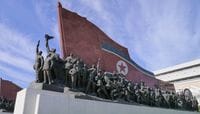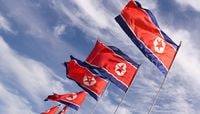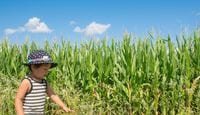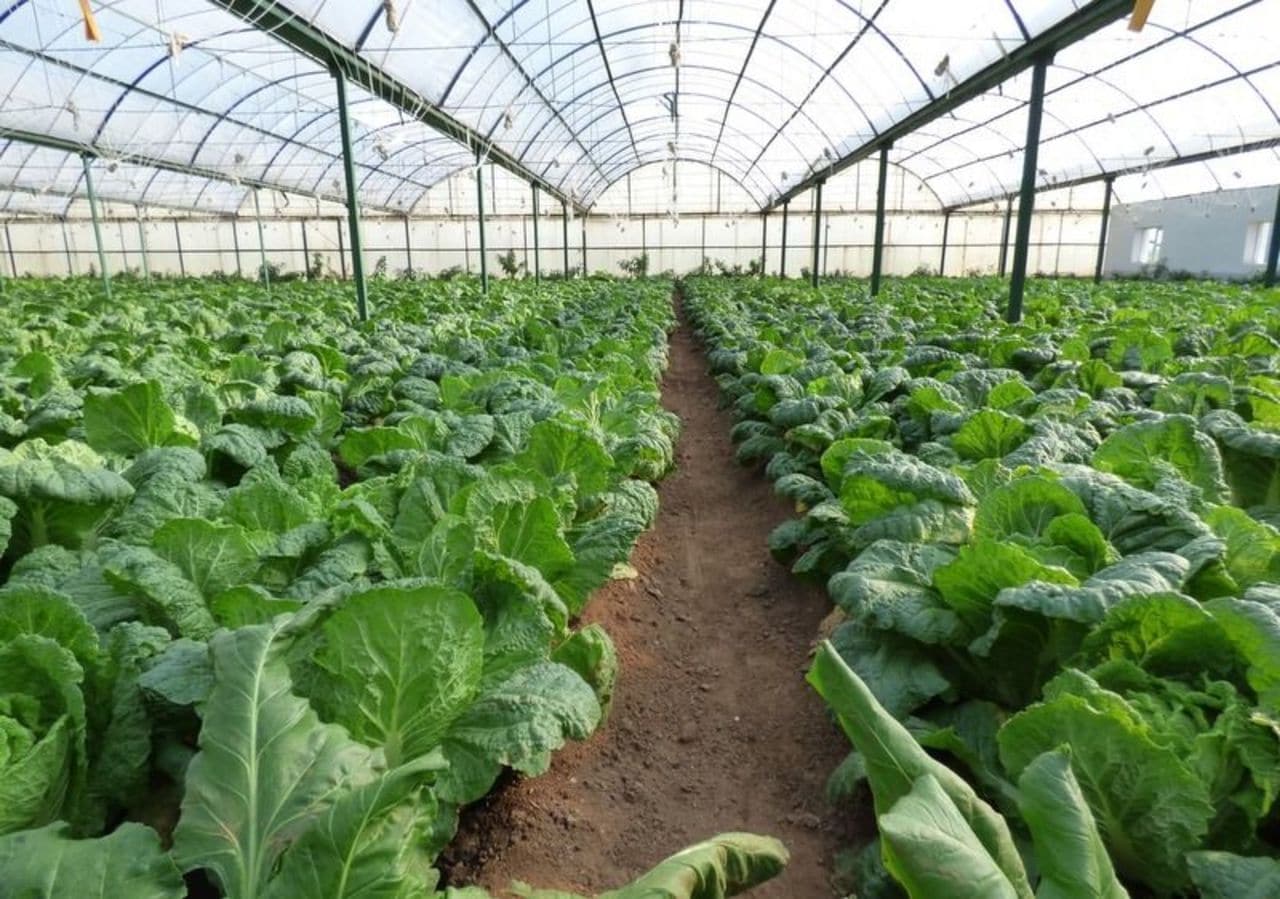
The economic outlook in North Korea (the Democratic People's Republic of Korea or DPRK) has become more and more promising since Kim Jong-un took the reins in 2012, and it appears that production advances in the agricultural sector—which accounts for more than 20% of the GDP—has contributed significantly.
In late September 2015, we visited the Zhangchon Cooperative Farm, 30 minutes by car from the capital city of Pyongyang. The farm grows tomatoes, cucumbers and other vegetables. The greenhouse-grown Chinese cabbage on the farm looked fresh and scrumptious enough to be sold on the shelves of supermarkets back home in Japan.
In June 2014, Jong-un visited and personally supervised the installation of 30 hectares (approximately 74 acres) of additional greenhouse facilities on this farm. According to Zhangchon's head engineer Cho Chanpyo, "our farm represents some of the most advanced modern agricultural efforts in the DPRK, particular in the area of greenhouse cultivation." However, he quickly adds that "we only started full-scale operations this year, so our workers are still uncertain about the state of the soil."
Farming work in family units
Workers at North Korean cooperative farms are divided into workgroups, which are then subdivided into smaller units of 10 to 25 people. In 2013, the country introduced a new system that further subdivides responsibility for working parcels of land, assigning each section either to individuals or to two- or three-person family units from within each workgroup subunit.
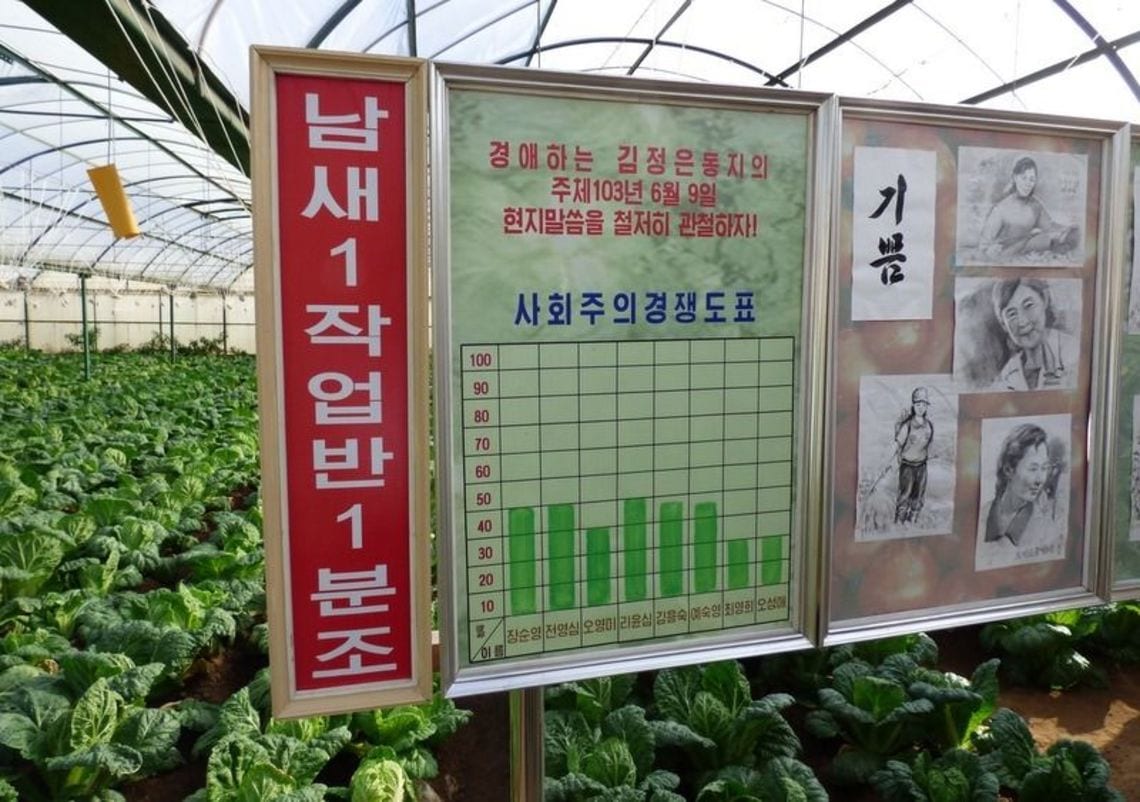
This clarifies who is responsible for what—responsibilities were somewhat unclear under the previous system—and distributes differing portions of harvests to workers depending on their level of contribution and the results they produce. The new approach aims to foster worker motivation and promote greater agricultural yields.
At the Zhangchon Cooperative Farm, each greenhouse is run by one workgroup subunit, and the new system of distributing responsibility among individuals and families is implemented within each subunit. When asked about the effectiveness of the new system, Head Engineer Cho responds that "to everyone's amazement, overall yields jumped by 30 to 40% following the system's introduction."
After leaving Zhangchon, we moved on to Pyongyang Vegetable Research Center, located in one of the capital's suburbs. The Center got its start in 2007 when a hydroponics research facility was constructed next to existing agricultural land, and in 2012 large-scale greenhouse facilities were added to the premises. According to the Center, their total greenhouse growing area is 400,000 square meters (approximately 99 acres).
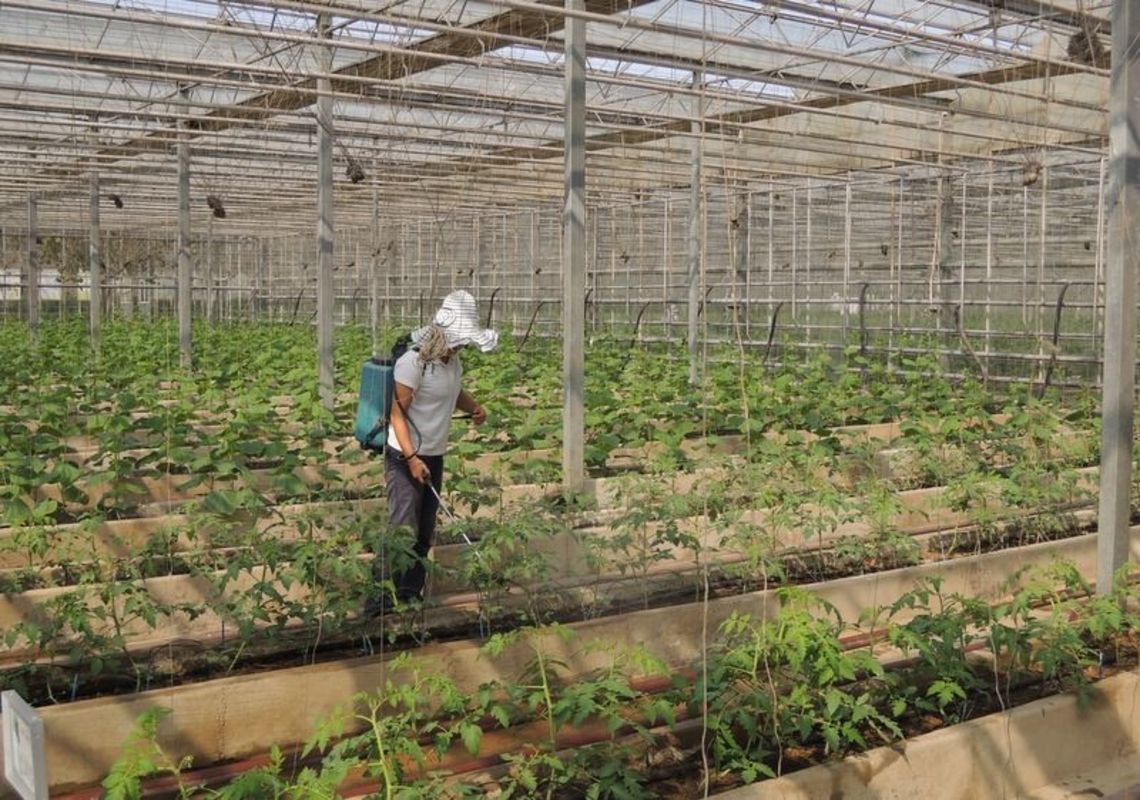
Just as at Zhangchon, the cucumbers, tomatoes, red peppers and other vegetables growing in the Pyongyang Vegetable Research Center's greenhouses were healthy and full-bodied. Imported seeds were also being planted and cultivated on an experimental basis, including some from Japan.
The greenhouse staff were passionate, fully absorbed in their work. Management at the Center told us that the introduction of the new work subdivision system had upped their production output by 30%.
After returning to Japan, I showed our photographs and video footage to a Japanese agricultural specialist, who confirmed that the plants were healthy and growing well.
According to this expert, "nothing seems to be deficient in terms of watering, plant nourishment and so forth. The greenhouses are more spacious than those we use in Japan, which brings a higher risk of crop damage from pests. However, because the North Korean climate is colder than Japan's, I see little reason to worry about pests, even with larger growing areas."
Food now available throughout the country
During the second half of the 1990s, the collapse of socialist countries and a string of major natural disasters (including multiple floods) in North Korea led to increasingly severe circumstances that culminated in famine throughout the nation. Even today, most Japanese people still associate North Korea with economic failure and food scarcity.
Currently, self-sufficient production of the North Korean staples rice and corn (grains) is showing yields below the 5.5–6.0 million ton range. According to the Korean Social Science Institute's Economic Research Center, a DPRK think tank, production output for 2013 was 5.66 million tons (polished grain), and this figure dropped slightly in 2014 due to the effects of droughts and other natural disasters. The same research center predicts that production output for 2015 will be roughly the same as the previous year.
In contrast, recovery in grain production operations has been progressing since 2010, as have the importing and full-scale domestic production of processed food products. These changes have resulted in significantly improved dietary conditions for citizens, and the tastes of North Koreans have diversified accordingly, which is why more focus is now being placed on the production of vegetables and other non-staple foods.
"If North Korea's grain production were to exceed 400 tons, nobody would be starving to death,” says Professor Jung Chganghyun of Kookmin University in South Korea.
Despite dwindling food provisions from the national government, the North Korean market is providing enough food to compensate. Market food prices have remained stable for the last year or two, which, according to Changhyun, "is evidence that food has now become available throughout the country."
The DPRK government has been expanding infrastructure development investments in the agricultural industry. They have also started to make improvements to agricultural production frameworks, which includes implementation of the abovementioned work subdivision system, and such model cases are being duplicated throughout the country. Only time will tell whether or not these efforts lead to real improvements.

